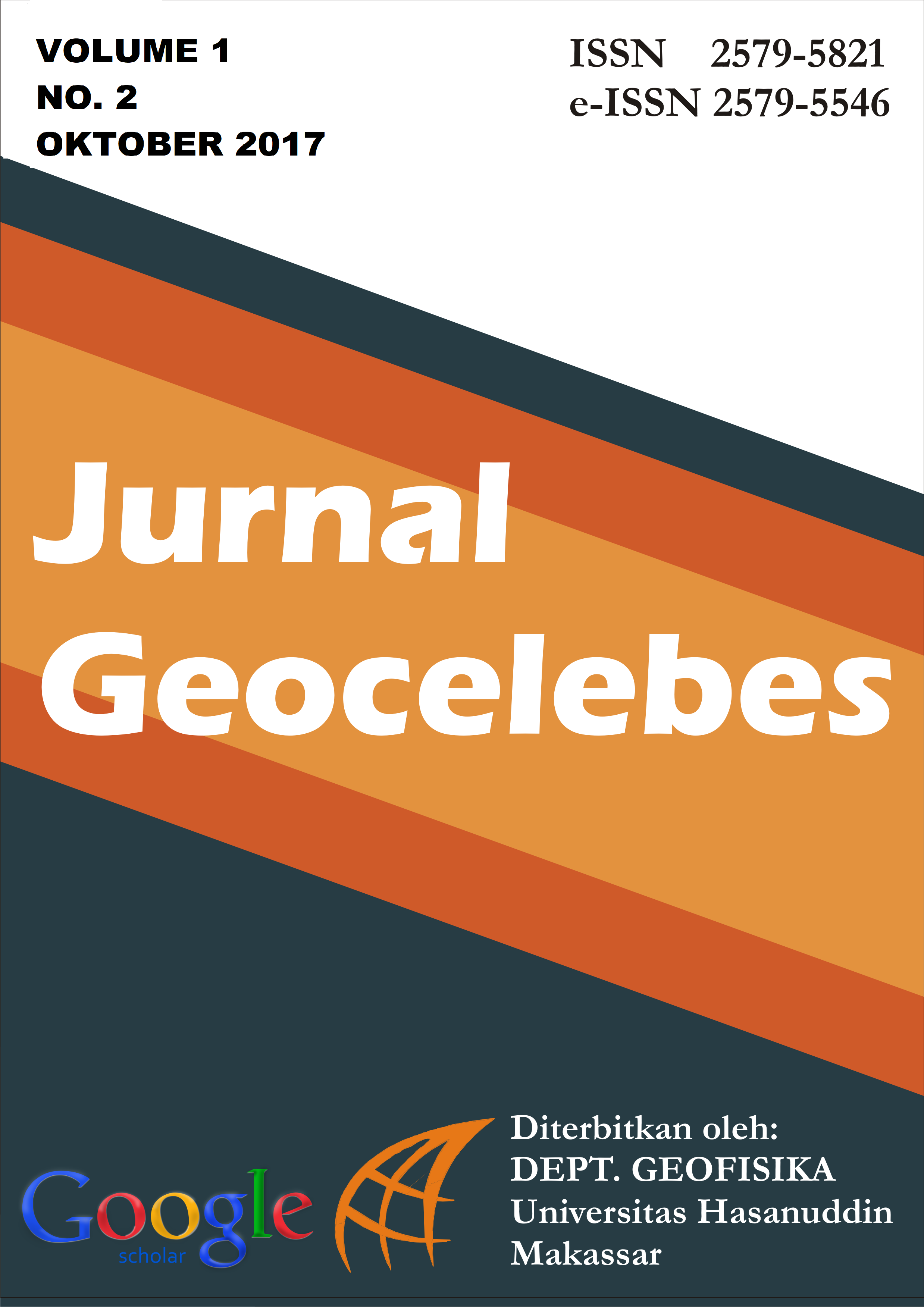KARAKTERISTIK FISIK DAN KIMIA MATAAIR PANAS DAERAH BARASANGA KABUPATEN KONAWE UTARA, PROVINSI SULAWESI TENGGARA
DOI:
https://doi.org/10.20956/geocelebes.v1i2.2291Abstract
AbstrakDaerah Barasanga menunjukkan manifestasi panasbumi berupa mataair panas dan endapan travertin. Penelitian ini bertujuan menganalisis karakteristik fisik dan kimia mataair panas Barasanga. Metode yang digunakan adalah studi pustaka dan observasi lapangan seperti pemetaan sebaran mataair panas, pengambilan sampel batuan kemudian dianalisis laboratorium. Hasil penelitian menunjukkan bahwa tipe dan jenis travertin pada mataair panas di daerah penelitian termasuk ke dalam jenis Incoherent Travertines. Suhu rata-rata 48 oC dan pH 7,85, warna jernih, berbau belerang dan berasa asin. Geokimia tipe mataair panas daerah penelitian merupakan tipe air klorida.Kata kunci: Barasanga, Manifestasi, Mataair panas, Panasbumi, TravertinDownloads
References
Brophy, P. (2011). An Introduction to Geothermal Energy. USA: CGEC Geothermal Outreach Workshop.
Grupta, H. and Roy, S. (2007). Geothermal Energy. Amsterdam, Netherland: Elsevier.
Nicholson, K. (1993). Geothermal Fluids Chemistry and Exploration Technique. Scotlandia, UK: School of Applied Science, University Aberdeen.
Pentecost, A. (2005). Travertine Dordrecht Netherlands. Kluwer Academic Publisher Group.
Rusmana, E., Sukido, Sukarna, D., Haryono, E., Simanjuntak, T.O. (1993). Keterangan Peta Geologi Lembar Lasusua - Kendari, Sulawesi, Skala 1:250.000. Bandung: Puslitbang Geologi, Badan Geologi.
Downloads
Published
How to Cite
Issue
Section
License
Authors who publish with this journal agree to the following terms:
- Authors retain copyright and grant the journal right of first publication with the work simultaneously licensed under a Creative Commons Attribution License that allows others to share the work with an acknowledgement of the work's authorship and initial publication in this journal.
- Authors are able to enter into separate, additional contractual arrangements for the non-exclusive distribution of the journal's published version of the work (e.g., post it to an institutional repository or publish it in a book), with an acknowledgement of its initial publication in this journal.
- Authors are permitted and encouraged to post their work online (e.g., in institutional repositories or on their website) prior to and during the submission process, as it can lead to productive exchanges, as well as earlier and greater citation of published work (See The Effect of Open Access).



